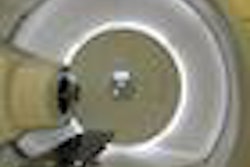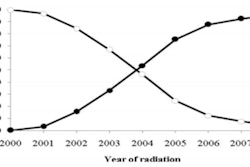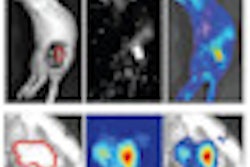The use of proton therapy for prostate cancer patients is highly controversial because its high cost compared to other radiation therapy treatments has not been justified by superior patient outcomes. However, prostate cancer patients are essential for a proton therapy center's financial well-being.
The three top executives of Indiana University (IU) Health Proton Therapy Center made this statement in a Journal of the American College of Radiology article that analyzes the financial economics needed to support a proton center's construction cost and its financing debt. Now that proton therapy facilities with a single gantry can be constructed at a cost of $25 million, the number operating in the U.S. is expected to double within the decade (JACR, August 2012, Vol. 9:8, pp. 560-563).
A team led by Dr. Peter Johnstone, president and CEO of the center, created a financial model to analyze the construction cost and debt of building a one-, three-, or four-gantry facility, based on 100% financing at 5% interest for a 15-year term. For the model, a one-room facility was assumed to cost $25 million and a four-room facility cost $150 million. The model also assumed that each treatment room was completely scheduled with patients over a 14-hour workday.
The authors populated the model with differing proportions of "simple" and "complex" patients and a mix of Medicare and private-payor reimbursement. Scheduling capacity assumptions were based on the IU Health Proton Therapy Center, with pediatric or complex cases requiring difficult immobilization, use of three or more treatment fields, and one hour of room time per treatment. Simple head, neck, and pelvic cases were presumed to require easy immobilization or two or fewer treatment fields, and were allocated 30 minutes of room time per treatment. Prostate cancer patients were allocated 24 minutes of room time per treatment.
The daily revenue of a single-gantry facility would cover its debt cost in four hours if it used this time only to treat prostate cancer patients, the authors determined. By comparison, a single-gantry room treating only pediatric patients, who require anesthesia, or complex patients would need to operate for 12 hours.
A three-gantry facility treating only complex or pediatric cases would not have enough treatment slots to recoup construction and debt-service costs; however, if one room were used exclusively for simple cases, it would. A four-gantry center would also need to include simple cases in its patient mix.
Even though the IU center is only one of 10 operating in the U.S., it is not always scheduled to capacity, Johnstone and colleagues noted. They warned that Medicare payments may also be reduced; this would have serious consequences because nearly 48% of prostate cancer patients are covered by Medicare, as are nearly 20% of other patients treated at their center, which they consider to be representative.
In summary, once operating costs and profit are considered, proton therapy centers will not survive without considerable workload dedicated to prostate cancer and other patients with short treatment times, the group concluded.



















